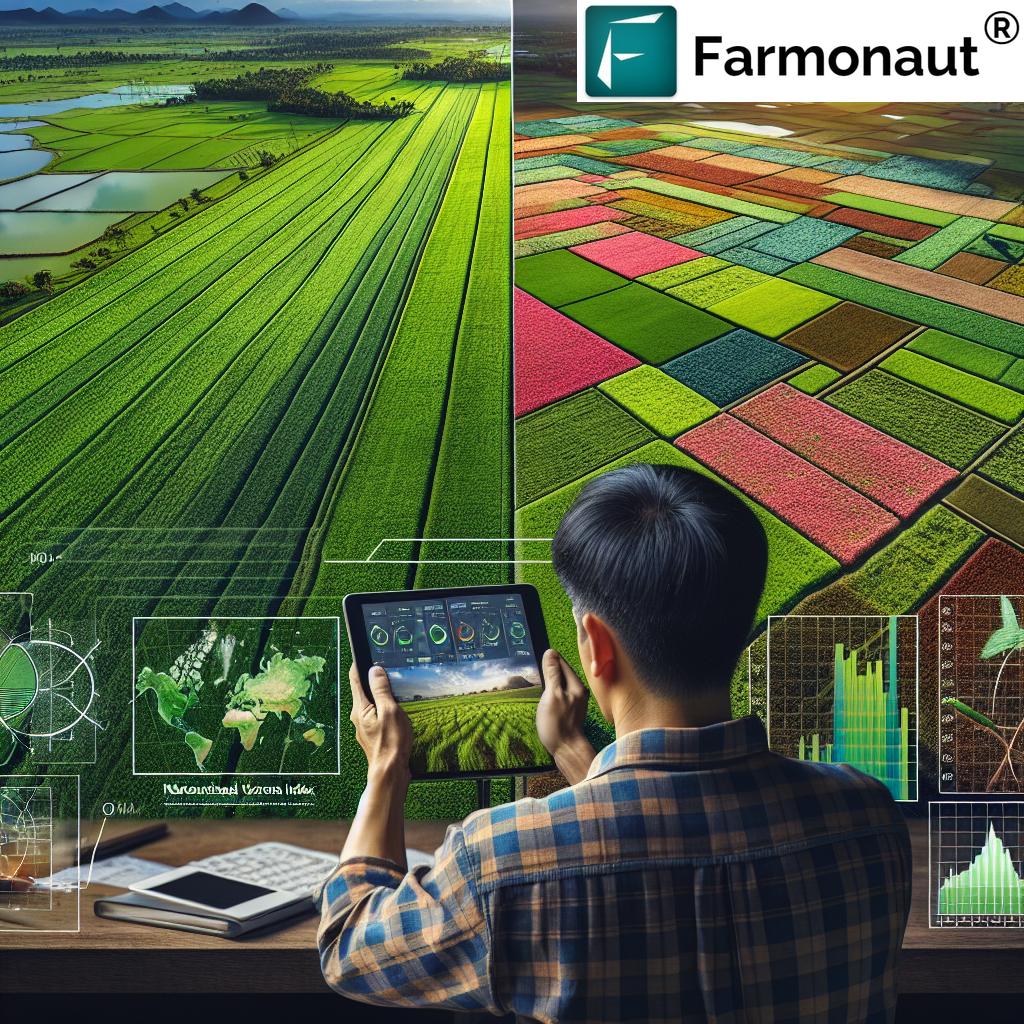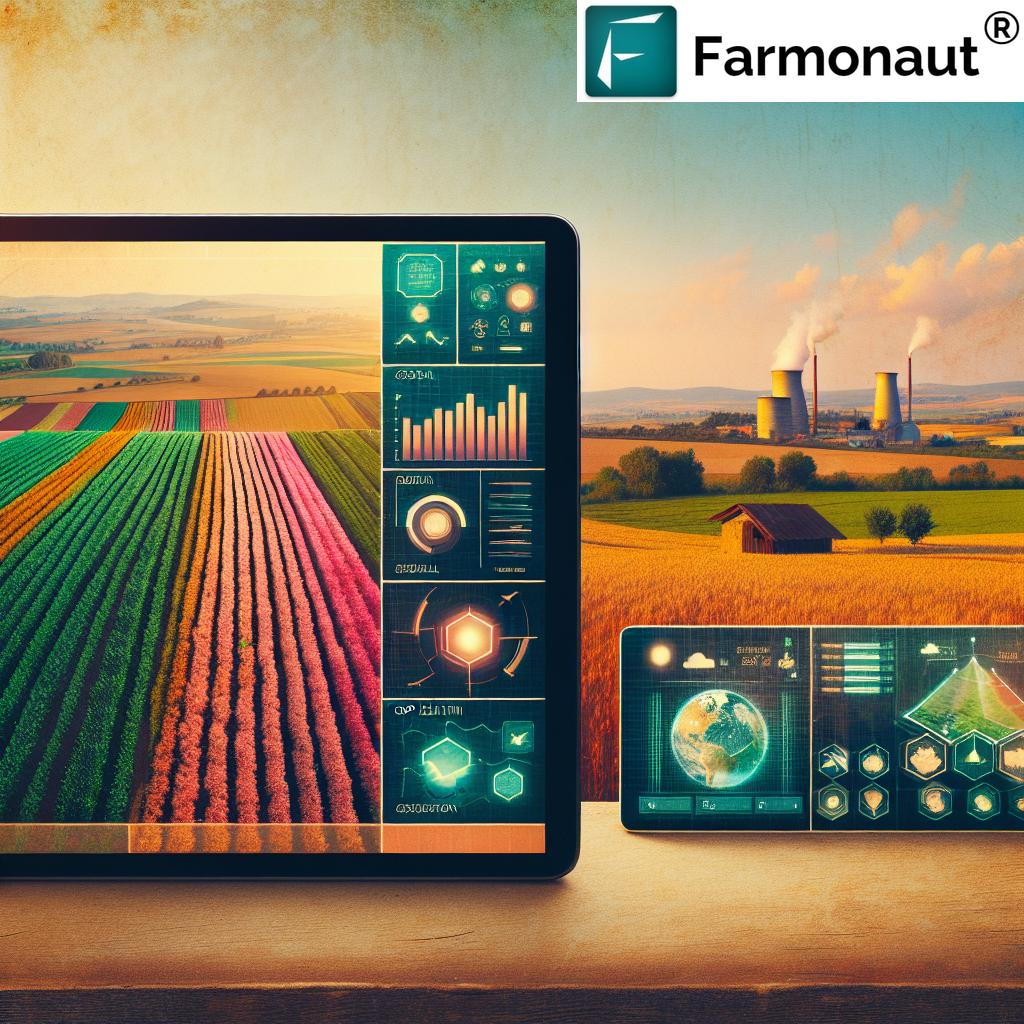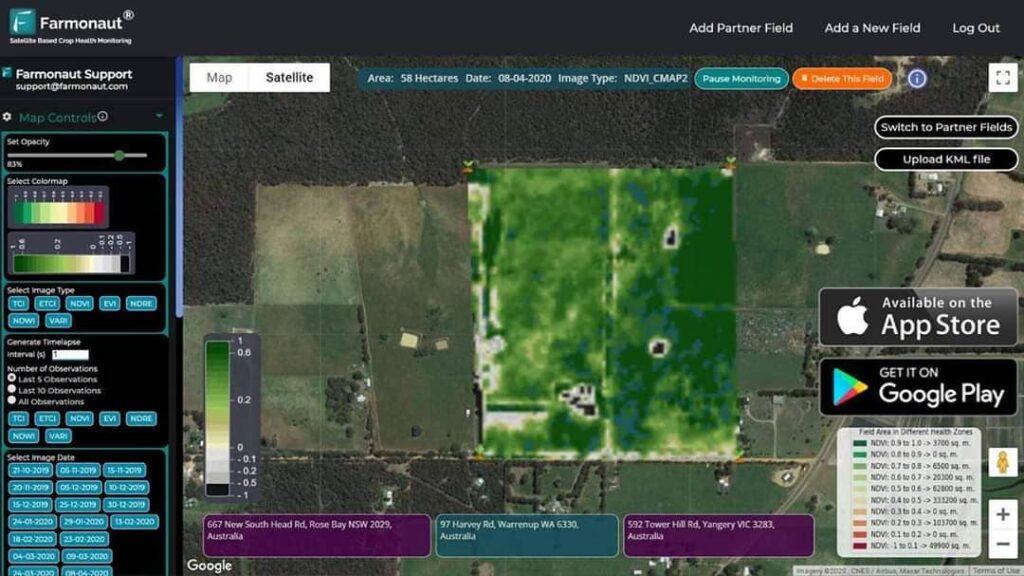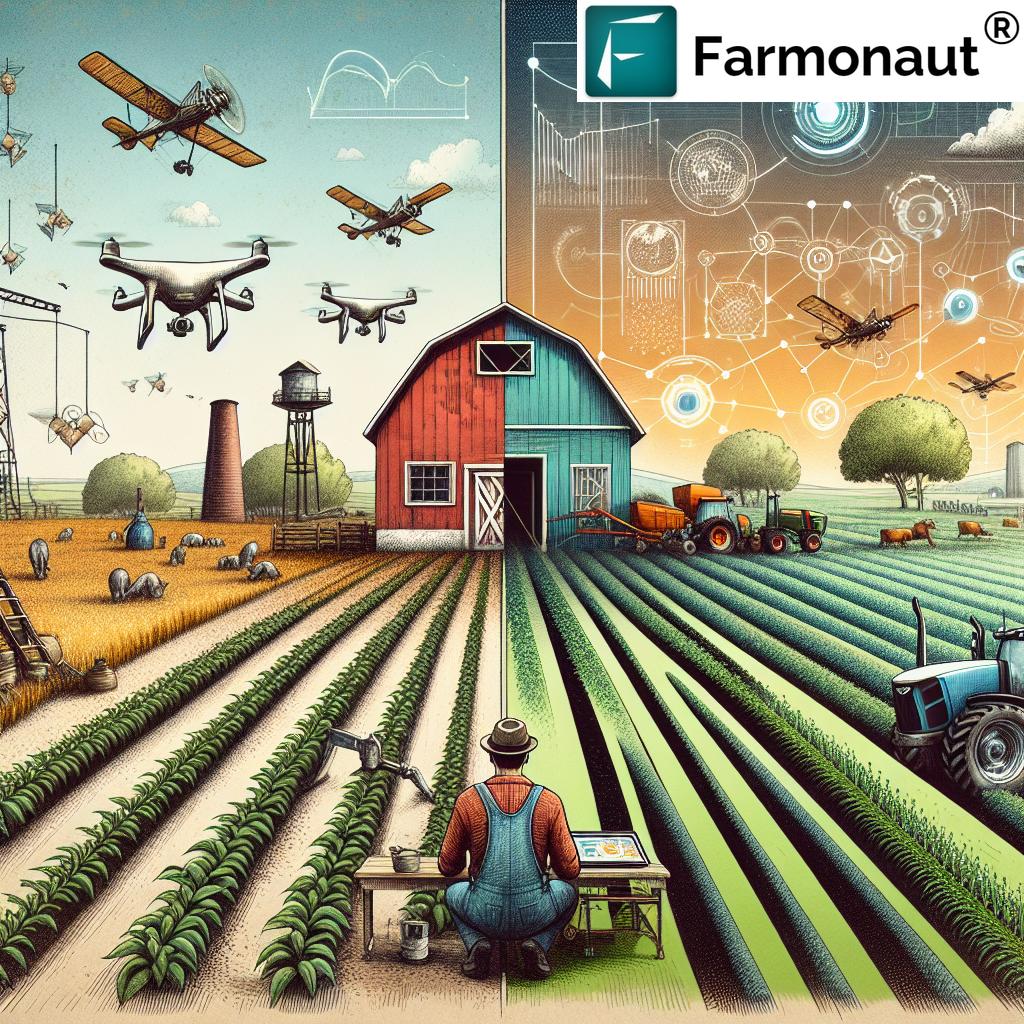Revolutionizing Australian Wine Exports: How GIS and Sustainable Practices Are Shaping the Future of Viticulture
“Australia’s wine industry uses GIS technology to manage over 146,000 hectares of vineyards across 65 distinct wine regions.”
Welcome to our comprehensive exploration of the Australian wine industry’s transformation through sustainable practices and cutting-edge technology. In this article, we’ll delve into how Geographic Information Systems (GIS) and innovative vineyard management techniques are reshaping the landscape of Australian viticulture, propelling the nation’s wines to new heights in the global market.
The Australian Wine Industry: A Snapshot
Australia has long been renowned for its diverse and high-quality wines, with a rich history dating back to the early 19th century. Today, the Australian wine industry stands as a powerhouse in the global market, known for its innovative approaches to winemaking and commitment to sustainability. Let’s explore the key factors driving this revolution:
- Sustainable wine production
- Organic wine export
- Implementation of GIS in viticulture
- Adoption of biodynamic wine practices
- Focus on wine certification standards
As we dive deeper into these aspects, we’ll uncover how they’re shaping the future of Australian wines and their position in the global wine market.
[Image 1]
Sustainable Wine Production: The Heart of Australian Viticulture
Sustainable wine production has become a cornerstone of the Australian wine industry. Winegrowers across the country are embracing practices that not only enhance the quality of their wines but also protect the environment for future generations. Here’s how sustainability is transforming Australian viticulture:
- Water Conservation: Innovative irrigation systems and drought-resistant grape varieties
- Soil Management: Cover cropping and minimal tillage to improve soil health
- Pest Control: Integrated pest management reducing reliance on chemical pesticides
- Energy Efficiency: Solar-powered wineries and energy-efficient processing equipment
These sustainable winegrowing practices are not just good for the environment; they’re also enhancing the quality and unique character of Australian wines, making them increasingly attractive in the global wine market.
Organic Wine Export: Meeting Global Demand
The demand for organic wines has surged worldwide, and Australia is at the forefront of meeting this growing consumer preference. Organic wine export from Australia has seen significant growth in recent years, driven by:
- Stringent organic certification standards
- Increased consumer awareness of health and environmental benefits
- Superior taste profiles attributed to organic growing methods
Australian organic wines are gaining recognition for their purity and expression of terroir, making them highly sought after in key export markets such as Europe, North America, and Asia.
GIS in Viticulture: Precision Farming for Premium Wines
Geographic Information Systems (GIS) have revolutionized vineyard management in Australia. This technology allows winegrowers to make data-driven decisions, optimizing every aspect of wine production. Here’s how GIS is transforming Australian viticulture:
- Terroir Mapping: Detailed soil and microclimate analysis for optimal grape variety selection
- Yield Forecasting: Accurate predictions for better harvest planning and resource allocation
- Disease Management: Early detection and targeted treatment of vineyard diseases
- Water Management: Precision irrigation based on real-time soil moisture data
By leveraging GIS technology, Australian wineries are producing higher quality grapes more consistently, leading to premium wines that stand out in the global market.
Explore Farmonaut’s GIS solutions for viticulture

Biodynamic Wine Practices: Harmony with Nature
Biodynamic wine practices are gaining traction in Australia, offering a holistic approach to viticulture that goes beyond organic farming. These practices involve:
- Lunar calendar-based planting and harvesting
- Use of natural preparations to enhance soil and plant health
- Promoting biodiversity within the vineyard ecosystem
Australian biodynamic wines are celebrated for their unique flavors and are increasingly recognized in international wine competitions, further boosting the country’s reputation for innovative and high-quality wines.
“Australian wine exports reached a record value of AUD 2.78 billion in 2020, with sustainable practices driving growth.”
Wine Certification Standards: Ensuring Quality and Authenticity
Rigorous wine certification standards play a crucial role in maintaining the integrity and reputation of Australian wines in the global market. These standards cover various aspects:
- Geographical Indications (GI) to protect regional authenticity
- Organic and biodynamic certifications
- Sustainability credentials
- Quality assurance protocols
By adhering to these stringent standards, Australian winemakers ensure that their products meet the highest quality benchmarks, building trust with consumers worldwide.
[Image 2]
Carbon Emissions in Winemaking: Addressing Climate Change
The Australian wine industry is taking proactive steps to reduce its carbon footprint, recognizing the urgent need to address climate change. Initiatives include:
- Implementing energy-efficient winery equipment
- Adopting renewable energy sources like solar and wind
- Optimizing transportation and packaging to reduce emissions
- Carbon sequestration through improved vineyard management practices
These efforts not only contribute to environmental sustainability but also resonate with eco-conscious consumers in the global wine market.
Wine Grape Varieties: Diversity and Innovation
Australia’s diverse climate and soil types allow for the cultivation of a wide range of wine grape varieties. From classic varieties to innovative blends, Australian winemakers are pushing the boundaries of viticulture:
- Traditional Varieties: Shiraz, Cabernet Sauvignon, Chardonnay
- Emerging Varieties: Tempranillo, Sangiovese, Vermentino
- Alternative Varieties: Fiano, Nero d’Avola, Gruner Veltliner
This diversity not only caters to varied consumer preferences but also helps in adapting to changing climate conditions, ensuring the long-term sustainability of Australian viticulture.
Explore Farmonaut’s API for vineyard data analysis
Vineyard Management Techniques: Precision and Innovation
Australian vineyards are at the forefront of innovative management techniques, combining traditional knowledge with cutting-edge technology:
- Canopy Management: Optimizing sunlight exposure and air circulation
- Precision Viticulture: Using drones and sensors for targeted interventions
- Rootstock Selection: Choosing disease-resistant and climate-appropriate rootstocks
- Soil Health Management: Implementing cover crops and organic amendments
These advanced vineyard management techniques are crucial in producing high-quality grapes consistently, even in challenging climatic conditions.
Wine Blending Techniques: The Art of Crafting Unique Flavors
Australian winemakers are renowned for their skill in blending, creating unique and complex wines that stand out in the global market. Key aspects of wine blending in Australia include:
- Cross-regional blending to balance flavors and characteristics
- Innovative varietal combinations that challenge traditional norms
- Use of small-batch fermentation for greater blending flexibility
- Adoption of technology-assisted blending for consistency and quality
These blending techniques allow Australian winemakers to create distinctive wines that capture the essence of the country’s diverse terroir while appealing to a wide range of consumer preferences.
Climate Change and Viticulture: Adapting for the Future
Climate change poses significant challenges to the wine industry worldwide, and Australia is no exception. However, Australian viticulturists are proactively adapting to these changes:
- Exploring cooler climate regions for grape cultivation
- Developing heat-tolerant grape varieties
- Implementing water-saving technologies
- Adjusting harvest times to maintain optimal grape ripeness
By embracing these adaptive strategies, the Australian wine industry is ensuring its resilience and continued success in the face of changing climate conditions.
Access Farmonaut’s API Developer Docs for climate data integration
Wine Tourism in Australia: A Booming Sector
Wine tourism has become an integral part of the Australian wine industry, offering visitors unique experiences and contributing significantly to regional economies. Key aspects of Australian wine tourism include:
- Cellar door experiences and vineyard tours
- Wine and food pairing events
- Harvest festivals and wine-making workshops
- Luxury accommodations in picturesque vineyard settings
This thriving wine tourism sector not only boosts direct wine sales but also enhances brand recognition and loyalty for Australian wines in the global market.
Australian Wine in International Markets: Challenges and Opportunities
Australian wines have established a strong presence in international markets, but the industry faces both challenges and opportunities:
- Challenges:
- Intense competition from other wine-producing countries
- Trade tensions and changing tariff structures
- Evolving consumer preferences and market trends
- Opportunities:
- Growing demand for sustainable and organic wines
- Emerging markets in Asia, particularly China
- Increasing recognition of Australian premium wines
By leveraging its strengths in innovation, sustainability, and quality, the Australian wine industry is well-positioned to overcome challenges and capitalize on new opportunities in the global wine market.


The Role of Technology in Australian Viticulture
Technology plays a crucial role in the advancement of Australian viticulture. Here’s a comparative look at how the Farmonaut Satellite System is revolutionizing vineyard management:
| Vineyard Management Aspect | Traditional Methods | With Farmonaut Satellite System |
|---|---|---|
| Water Management | Weekly manual inspections | Daily satellite-based moisture analysis, 30% water savings |
| Pest Detection | Regular field walks, reactive approach | Early detection through spectral analysis, 50% reduction in pesticide use |
| Yield Prediction | Historical data and manual sampling | AI-driven predictions with 90% accuracy, optimized harvest planning |
| Soil Health Monitoring | Annual soil testing | Continuous monitoring, targeted nutrient management, 25% increase in soil quality |
| Climate Change Adaptation | Reactive measures based on seasonal observations | Proactive planning using long-term climate data, 40% better resilience to weather extremes |
Conclusion: The Future of Australian Wine
As we’ve explored throughout this article, the Australian wine industry is at the forefront of innovation, sustainability, and quality. By embracing GIS technology, sustainable practices, and a commitment to excellence, Australian wines are set to continue their ascent in the global market. The industry’s adaptability in the face of challenges like climate change and evolving consumer preferences positions it well for long-term success.
From the sun-drenched vineyards of the Barossa Valley to the cool-climate regions of Tasmania, Australian winemakers are crafting wines that not only reflect their unique terroir but also embody the spirit of innovation that defines the nation’s approach to viticulture. As we look to the future, it’s clear that Australian wines will continue to captivate and delight wine enthusiasts around the world, setting new standards for quality, sustainability, and innovation in the global wine industry.
FAQ Section
Q: What makes Australian wines unique in the global market?
A: Australian wines stand out due to their diverse range of grape varieties, innovative blending techniques, and the distinct terroir of Australia’s wine regions. The industry’s focus on sustainability and use of cutting-edge technology in viticulture also contributes to their uniqueness.
Q: How is climate change affecting Australian viticulture?
A: Climate change is impacting Australian viticulture through rising temperatures, altered rainfall patterns, and increased frequency of extreme weather events. Winemakers are adapting by exploring cooler climate regions, developing heat-tolerant grape varieties, and implementing water-saving technologies.
Q: What role does GIS play in Australian wine production?
A: GIS technology is crucial in modern Australian viticulture, enabling precise vineyard mapping, optimized resource management, and data-driven decision-making. It helps in everything from soil analysis and irrigation planning to disease management and yield forecasting.
Q: Are organic and biodynamic wines popular in Australia?
A: Yes, organic and biodynamic wines are gaining significant popularity in Australia. Many vineyards are adopting these practices to meet growing consumer demand for sustainable and environmentally friendly wines, both domestically and in export markets.
Q: How important is wine tourism to the Australian wine industry?
A: Wine tourism is a vital component of the Australian wine industry, contributing significantly to regional economies and enhancing brand recognition. It offers visitors unique experiences through cellar door tastings, vineyard tours, and wine-related events, helping to build loyalty and increase direct sales.













